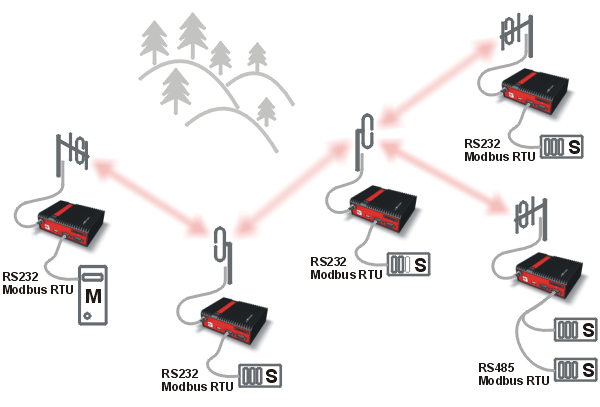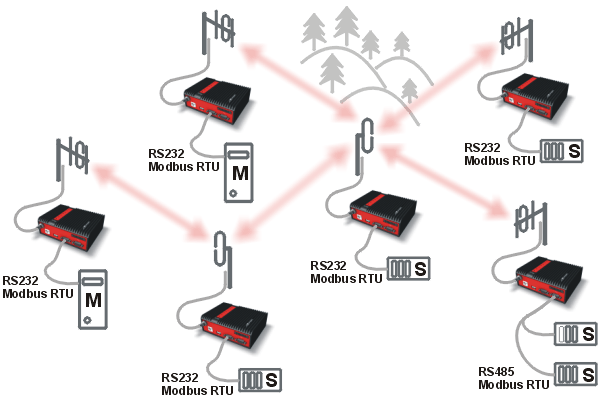A standard simple network design with a single Master and several Slaves running Modbus RTU.
In Bridge mode, set the type of communication interface (RS232 or RS485) for the COM port as well as the parameters of the serial interface, both for the Master and Slave.
In Router mode, set the COM port of your Master RipEX to Modbus (Mode of Connected device). To translate Modbus addresses to RipEX format and vice versa either use a mask (if RipEX addresses mirror the Modbus ones) or table. A table must be used if there are several Modbus slaves behind a single RipEX (RS485 or both COM1 and COM2). For more information refer to on-line help or chapter Protocols / Common parameters of the manual.
In addition, set Modbus to Slave on all remote units. If you intend to broadcast in Modbus, set the required parameters. For more information refer to on-line help or chapter Protocols / Slave of the manual.
RipEX allows for several Masters to operate at the same time and to communicate with the same Slaves. Router mode is presumed in this design. RipEX settings remain the same as above. Each Slave responds directly to the Master unit which queries it – i.e. if Master A issues a query to a Slave, the response is sent exclusively to Master A. If a single Slave is queried by two Masters at once, queries are resolved one by one. Query from the second Master is queued inside RipEX until it receives a response from Slave RTU on its serial interface or until 500 ms timeout has passed.

